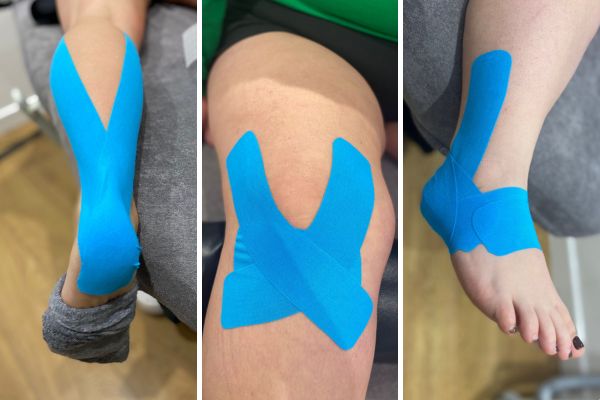What is a growth related injury?
A growth related injury (also known as traction apophysitis) commonly occurs in active children and teenagers. These injuries are the most common injuries found in academy sports that involve running, jumping and kicking, such as football and basketball.
These pains occur during growth spurts, when the bones grow quickly causing the tendons of the muscles to pull on the bone.
This mechanism causes pain, dysfunction, and discomfort in the affected area. These pains are usually felt in the lower limb and hip areas, which vary due to age (See Table 1).
These injuries are often paired with high frequency of sport and exercise; meaning that they are common in young athletes that train and exercise too often. For example, athletes that compete both for their club and school team or participate in multiple sports without sufficient rest.
These injuries go away with time due to the muscles and tendons reaching a suitable length for the bones. However, there are various ways to manage this injury, including reducing training load and pain management techniques such as cryotherapy, compression therapy and k-taping.
Do I have a growth related injury?
Below is a brief table of a few growth-related injuries, their symptom area and common population:
| Condition | Area of pain | Common age of condition |
| Severs | Pain at heel | 7-10 year old |
| Osgood Schlatters | Pain at lower front of knee | 10-15 years old |
| Pelvic/Hip Apophysitis | Dull pain in hip/groin | 12 – 18 years old |
Table 1: growth related injury
Severs Apophysitis
Severs Apophysitis is a condition that effects active children aged 7-10 years old. The pain is often felt on the heel bone and is aggravated during physical activity. This growing pain is caused specifically by the achilles tendon pulling repeatedly on the heel bone around the growth plate, due to the bones in the lower leg growing quicker than the muscles during a child’s growth spurt. This then causes pain and swelling, especially if taking part in high impact activity such as running and jumping.
Some other common symptoms include:
- Limp or walk on their toes due to the pain.
- One or both heels can be affected.
- The heel is tender if squeezed.
- There may be local swelling where the achilles tendon meets the bone.
- The calf muscles may be tight.

Osgood Schlatter Disease
Osgood Schlatter Disease (OSD) is a growth-related condition that causes swelling and pain just below the knee. This condition is common in adolescents ages 10-15 years old, however it can affect adults too. It is most common in children that play sports that involve kicking, running or jumping. This pain is caused by the patella tendon pulling on the tibial tuberosity, due to the lower limb bones growing faster than the muscles/tendons.
Common symptoms:
- Pain in the lower part of the knee (Patella tendon)
- A prominent, tender tuberosity (lump/bony prominence) under the knee.
- Swelling or tenderness of the knee.
- Increased warmth under the knee and over the shinbone.
- Increased pain while running, exercising or any physically stressing activities.
- Limping after physical activity.
- Tight quadricep and/or hamstring muscles.

Pelvic / Hip Apophysitis
Hip apophysitis is another growth-related condition that commonly affects physically active teenagers. This painful condition takes place due to growth plates in the pelvis not being fully matured and having a tight or overused tendon attached to the plate, which causes a tug to the bone, creating pain and swelling.
This condition is common in athletes aged 12-21, as this is the last area of the body to develop.
Common pain sites of hip apophysitis include:
Common symptoms:
• Dull ache in groin, front or side of the hip.
• Tenderness on pelvic/hip bone.
• Swelling.
• Can feel like a muscle strain.
• Abdominal pain in rare cases (recommended to seek further medical advise for diagnosis).

How do these injuries affect sport and performance?
As these injuries are caused by growth and overuse, they can limit the performance of a young athlete. To reduce pain, sports therapists recommend rest and training load reduction. This can affect an athlete’s performance as they may miss out on training sessions and competitions. There are multiple therapeutic modalities that can help manage this pain including cryotherapy.
What is cryotherapy?
Cryotherapy a treatment that involves cold temperatures being applied to the body, whether that is through whole body cryotherapy chambers, or a localised cryotherapy handheld machine. As well as targeting injury sites and reducing pain, it also has many other benefits including:
• Relieving muscle tension and boosts post-exercise recovery time.
• Aids injury prevention.
• Reduces stiffness.
• Increasing flexibility and range of movement.
• Enhanced healing allows the body to prepare for the next training load.
• Promotes muscle growth by repairing tissue and replenishing glycogen (energy stores).
• Reduces muscle fatigue and soreness.
• Decreases the risk of injury, overtraining, and burnout.
• Better performance, endurance, agility, and reaction time in training sessions.
• Helps to combat the ‘stress’ associated with exercise.
• Better quality of sleep – exercise produces energy-boosting hormones like cortisol and adrenaline but constant exercise overproduces these hormones giving you a hard time getting quality sleep.

Will compression therapy help with traction apophysitis injuries?
Compression therapy can also reduce pain and inflammation in the affected area, after exercise. Due to lack of rest between exercise having a worsening effect on these growing up injuries, compression therapy can provide effects that minimise inflammation, which results in a shorter recovery time.

Can K-Taping be effective in reducing pain in growing up injuries (traction apophysitis)?
K-Taping is effective in decompressing the inflamed area, creating an “offloading” effect on the effected tissues. This particular type of tape can be effective on Severs and Osgood Schlatters. K-tape cannot directly affect hip apophysitis pain due to the depth of the hip tissues involved, however this type of tape can be used to reduce general hip and hip flexor pain that may be present.
K-tape application takes a matter of minutes, and can last for 3 to 5 days; so it is a very convenient treatment option to these pains.

Learn more about our cryotherapy and sports injury treatments here or if you’re ready to book in head to our ‘Shop Treatments’ page. If you want to chat to one of our Sports Therapists, they are happy to help – get in touch here.





